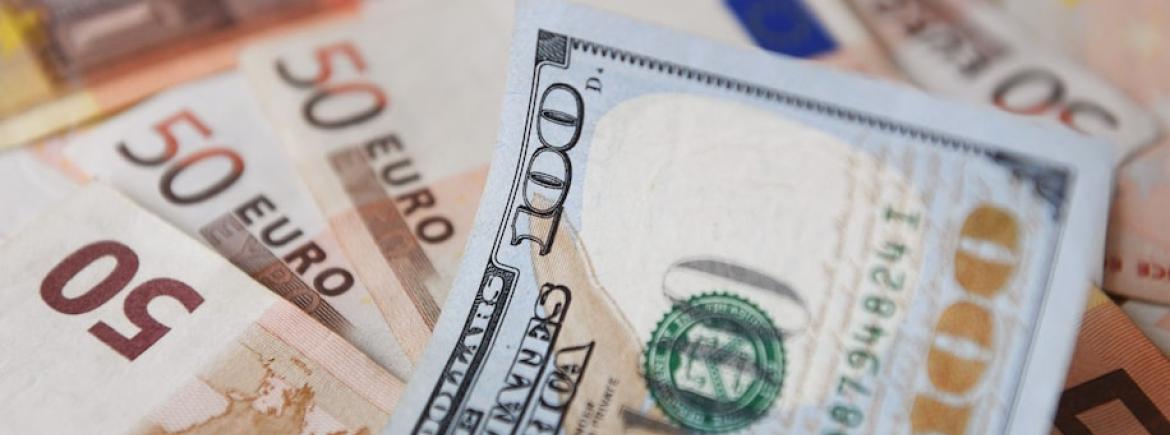The euro and the U.S. dollar are exchanging at a 1-to-1 rate for the first time in nearly two decades, when the European currency was in its infancy.
The euro has been losing ground against the dollar since the start of the year, when it hovered near $1.13, amid an aggressive inflation-fighting campaign by the U.S. Federal Reserve, along with broader global disruptions set off by the Russian invasion of Ukraine. They reached parity on Wednesday morning, according to Bloomberg data.
The stronger dollar is good news for Americans considering a European vacation or buying goods abroad. It could lower the price of commodities, such as grain, and potentially ease the relentless inflation that has sent household and business expenses surging. But experts say the euro’s retreat also hints at the slower pace of global trade, adding to recession worries.
Here are some of the ways this could affect consumers, businesses and travelers.
Why is the euro falling against the dollar?
It’s a mix of factors, chief among them the war in Ukraine.
The conflict upended food supplies and sent energy prices soaring around the world, particularly impacting the European Union, where many countries have relied heavily on Russian fossil fuel imports.
As part of a pressure campaign against its eastern neighbor, the 27-nation European Union moved to wean itself off Russian oil, while Moscow sharply reduced gas flows. That raised costs for Europeans already reeling from the pandemic.
In the United States, the Fed has been aggressively raising interest rates, pushing yields on Treasury bonds higher, and making the greenback more attractive to investors than the euro. America’s central bank has raised rates three times in 2022 and has signaled that it has four more increases planned as part of its strategy to bring inflation under control.
The European Central Bank also is expected to raise rates to bring inflation back to a 2 percent target, but at a slower pace than the United States: It has penciled in a 0.25 percentage point rate hike for July, while the Fed is widely expected go with a 0.75 percentage point, just as it did in June.
The dollar is considered a safe haven, and it has gained strength as investors maneuver an uncertain economic playing field in Europe and elsewhere.
“We expect the dollar to continue to benefit from its status as a safe haven for international investors and commercial interests, particularly considering the more precarious position of Europe’s economy,” RSM chief economist Joe Brusuelas wrote in late April as the dollar gained value.
What does parity mean for the euro?
Despite concerns, some analysts described the euro-dollar parity as a “psychological” milestone that would not necessarily be a turning point for the currency, which already was well off its 2008 peak near $1.60.
Still, “it is worth expecting that Europe will no longer get away with soft market reassurances and modest actions, so the pressure on the single currency may persist for the foreseeable future,” said Alex Kuptsikevich, senior market analyst at foreign currency trader FxPro.
He noted that central banks and policymakers on the continent will be “forced to respond” to depreciation worries.
“The psychological impact is clearly important and investors are going to be very focused” on the market, flows and liquidity, according to an analysis from Deutsche Bank Research, which said Tuesday it did not anticipate “an unusual risk profile” due to the parity.
What does this mean for businesses and consumers?
Shifting global currencies can have a profound effect on businesses that sell their products abroad or rely on foreign raw materials to make them. It also can also can play into the price of commodities, such as grain, that have a straight line to consumers.
European businesses that sell their wares abroad might find the weaker currency makes their exports more appealing, because the buyer’s currency will be more valuable by comparison.
But any gains to exports could be offset by rising inflation in the 19 countries that use the euro, meaning any imported goods or raw materials will become more expensive. The shifting exchange rates could create winners and losers depending on the mix of imports and exports.
Some experts interpret the weaker currency as a sign of slower economic growth for Europe.
With the euro’s decline, “It’s becoming increasingly clear that the Euro zone is heading into recession, even as financial conditions have tightened more than in the U.S. or Japan,” Robin Brooks, chief economist at the Institute of International Finance, said in a tweet.
In the United States, a strengthening dollar presents a different set of problems and opportunities.
It could hurt American exports abroad, because foreign buyers’ purchasing power is weakened. It also will affect currency translations on repatriated profits for U.S. multinationals, Comerica Wealth Management chief investment officer John Lynch said in a note Tuesday.
Commodities such as grain and industrial-grade metals have become more expensive recently, but a stronger dollar could help contain prices, said Jay Hatfield, chief executive at Infrastructure Capital Management.
“The strong dollar drives the prices of global commodities lower, as most commodities are priced in dollars,” Hatfield said Tuesday in a note. “We anticipate that inflation will start dropping substantially in the Fall as commodity prices are reflected in price indices.”
What do euro-dollar values mean for travelers?
It will become more expensive for Europeans and people who earn their wages in euros to travel abroad and spend in U.S. dollars.
For Americans who see Europe as a popular travel destination, the near 1-to-1 ratio means they will not only have an easier time deciphering prices, but also greater spending power when visiting such euro zone destinations as France, Germany, Spain, Italy and Greece.
The currency dynamics could benefit Americans traveling outside the euro zone, too. The U.S. dollar is also up against the Mexican peso, the Canadian and Australian dollars, and the South Korean won over the last month.
Original post: https://www.washingtonpost.com/business/2022/07/12/euro-us-dollar-parity/

